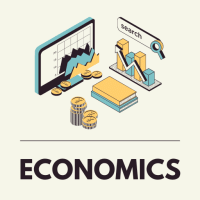Commerce Exam > Commerce Questions > People’s Republic of China was establis...
Start Learning for Free
People’s Republic of China was established in
- a)1947
- b)1950
- c)1949
- d)1948
Correct answer is option 'C'. Can you explain this answer?
| FREE This question is part of | Download PDF Attempt this Test |
Verified Answer
People’s Republic of China was established ina)1947b)1950c)1949d...
The state was established in January 1912 after the Xinhai Revolution, which overthrew the Qing dynasty, the last imperial dynasty of China. Its government fled to Taipei in 1949 due to the Kuomintang's defeat in the Chinese Civil War.Correct option is C.
View all questions of this test
Most Upvoted Answer
People’s Republic of China was established ina)1947b)1950c)1949d...
The state was established in January 1912 after the Xinhai Revolution, which overthrew the Qing dynasty, the last imperial dynasty of China. Its government fled to Taipei in 1949 due to the Kuomintang's defeat in the Chinese Civil War.
Free Test
FREE
| Start Free Test |
Community Answer
People’s Republic of China was established ina)1947b)1950c)1949d...
Establishment of the People’s Republic of China
The People’s Republic of China (PRC) was officially established on October 1, 1949. This marked a significant turning point in Chinese history, following years of civil war and turmoil.
Historical Context
- Chinese Civil War: The establishment of the PRC came after a prolonged civil war between the Chinese Nationalist Party (Kuomintang) and the Communist Party of China (CPC).
- Victory of the CPC: The CPC, led by Mao Zedong, emerged victorious and proclaimed the establishment of the PRC from Tiananmen Square in Beijing.
Key Events Leading to the Establishment
- End of World War II: The war concluded in 1945, leaving China in a state of disarray, which intensified the existing civil conflict.
- Formation of the PRC: On October 1, 1949, Mao Zedong declared the formation of the PRC, signifying the end of the Nationalist government and the establishment of Communist rule.
Significance of the Date
- New Era: The establishment of the PRC represented the beginning of a new era for China, characterized by significant political, social, and economic changes.
- International Relations: It also reshaped global politics, as the PRC became a major player in international affairs, particularly during the Cold War.
In summary, the correct answer is option 'C', as the People’s Republic of China was officially founded in 1949, marking a pivotal moment in both Chinese and world history.
The People’s Republic of China (PRC) was officially established on October 1, 1949. This marked a significant turning point in Chinese history, following years of civil war and turmoil.
Historical Context
- Chinese Civil War: The establishment of the PRC came after a prolonged civil war between the Chinese Nationalist Party (Kuomintang) and the Communist Party of China (CPC).
- Victory of the CPC: The CPC, led by Mao Zedong, emerged victorious and proclaimed the establishment of the PRC from Tiananmen Square in Beijing.
Key Events Leading to the Establishment
- End of World War II: The war concluded in 1945, leaving China in a state of disarray, which intensified the existing civil conflict.
- Formation of the PRC: On October 1, 1949, Mao Zedong declared the formation of the PRC, signifying the end of the Nationalist government and the establishment of Communist rule.
Significance of the Date
- New Era: The establishment of the PRC represented the beginning of a new era for China, characterized by significant political, social, and economic changes.
- International Relations: It also reshaped global politics, as the PRC became a major player in international affairs, particularly during the Cold War.
In summary, the correct answer is option 'C', as the People’s Republic of China was officially founded in 1949, marking a pivotal moment in both Chinese and world history.
Attention Commerce Students!
To make sure you are not studying endlessly, EduRev has designed Commerce study material, with Structured Courses, Videos, & Test Series. Plus get personalized analysis, doubt solving and improvement plans to achieve a great score in Commerce.

|
Explore Courses for Commerce exam
|

|
Similar Commerce Doubts
People’s Republic of China was established ina)1947b)1950c)1949d)1948Correct answer is option 'C'. Can you explain this answer?
Question Description
People’s Republic of China was established ina)1947b)1950c)1949d)1948Correct answer is option 'C'. Can you explain this answer? for Commerce 2024 is part of Commerce preparation. The Question and answers have been prepared according to the Commerce exam syllabus. Information about People’s Republic of China was established ina)1947b)1950c)1949d)1948Correct answer is option 'C'. Can you explain this answer? covers all topics & solutions for Commerce 2024 Exam. Find important definitions, questions, meanings, examples, exercises and tests below for People’s Republic of China was established ina)1947b)1950c)1949d)1948Correct answer is option 'C'. Can you explain this answer?.
People’s Republic of China was established ina)1947b)1950c)1949d)1948Correct answer is option 'C'. Can you explain this answer? for Commerce 2024 is part of Commerce preparation. The Question and answers have been prepared according to the Commerce exam syllabus. Information about People’s Republic of China was established ina)1947b)1950c)1949d)1948Correct answer is option 'C'. Can you explain this answer? covers all topics & solutions for Commerce 2024 Exam. Find important definitions, questions, meanings, examples, exercises and tests below for People’s Republic of China was established ina)1947b)1950c)1949d)1948Correct answer is option 'C'. Can you explain this answer?.
Solutions for People’s Republic of China was established ina)1947b)1950c)1949d)1948Correct answer is option 'C'. Can you explain this answer? in English & in Hindi are available as part of our courses for Commerce.
Download more important topics, notes, lectures and mock test series for Commerce Exam by signing up for free.
Here you can find the meaning of People’s Republic of China was established ina)1947b)1950c)1949d)1948Correct answer is option 'C'. Can you explain this answer? defined & explained in the simplest way possible. Besides giving the explanation of
People’s Republic of China was established ina)1947b)1950c)1949d)1948Correct answer is option 'C'. Can you explain this answer?, a detailed solution for People’s Republic of China was established ina)1947b)1950c)1949d)1948Correct answer is option 'C'. Can you explain this answer? has been provided alongside types of People’s Republic of China was established ina)1947b)1950c)1949d)1948Correct answer is option 'C'. Can you explain this answer? theory, EduRev gives you an
ample number of questions to practice People’s Republic of China was established ina)1947b)1950c)1949d)1948Correct answer is option 'C'. Can you explain this answer? tests, examples and also practice Commerce tests.

|
Explore Courses for Commerce exam
|

|
Suggested Free Tests
Signup for Free!
Signup to see your scores go up within 7 days! Learn & Practice with 1000+ FREE Notes, Videos & Tests.



















